Curious about what draws digital nomads and travelers to Buenos Aires, a city that perfectly blends historical charm with urban dynamism? The answer lies in its magnificent avenues, each weaving its own narrative about the heart of Argentina.
Among them, Avenida 9 de Julio stands out, boasting the emblematic Obelisco, while Avenida del Libertador immerses you in cultural depth. These avenues are more than mere pathways; they pulse with the lifeblood of Buenos Aires.
Join ExpatPathways as we take you on an exploratory journey down “The 15 Most Important Avenues in Buenos Aires.” Designed for those captivated by culture, history, or the simple joy of exploration, our guide is your compass to the city’s wonders.
Dive into the soul of Buenos Aires with us and trace the avenues that sketch its vibrant essence.
The most important avenues of Buenos Aires
1. Avenida 9 de Julio
Known as the world’s widest avenue, Avenida 9 de Julio is a central artery in Buenos Aires, famous for hosting the iconic Obelisco. Stretching across three kilometers from the Retiro to Plaza Constitución, it connects major transport hubs, making it a pivotal route for navigating the city.
Beyond its practical role, Avenida 9 de Julio has become a symbolic landscape for tourism and a green axis enhancing the downtown area, frequently used for significant cultural, sports, and political events.
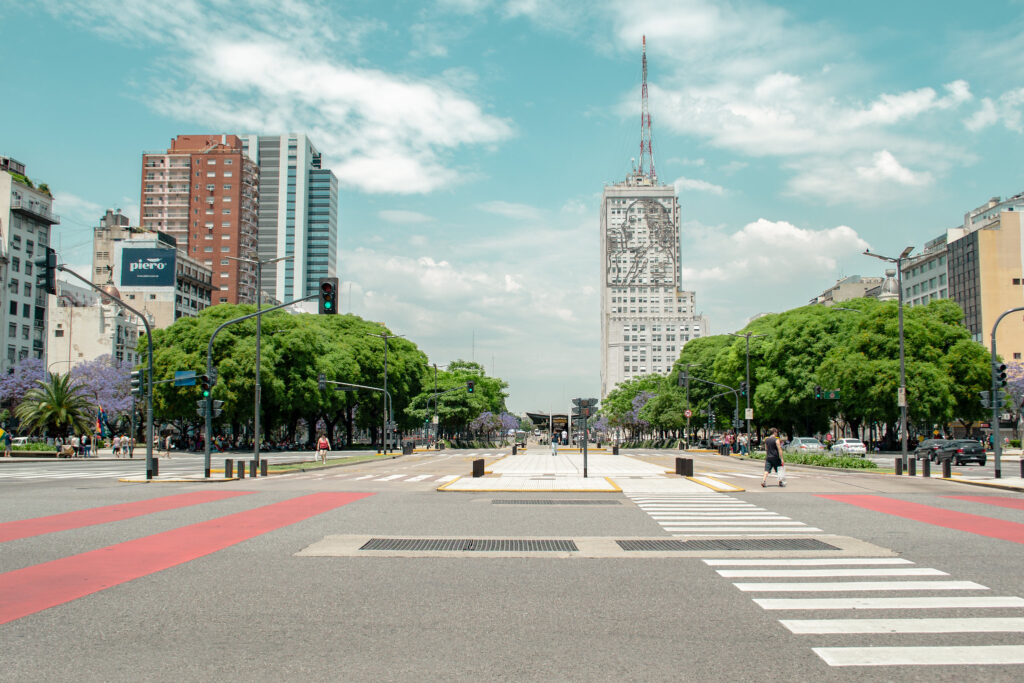
2. Avenida del Libertador
Stretching over 35 kilometers from Retiro to the San Fernando canal, Avenida del Libertador is a vital thoroughfare in Buenos Aires and the northern Greater Buenos Aires area.
Named after General José de San Martín, this avenue is lined with upscale residences and cultural landmarks, including the Recoleta Cemetery, the National Museum of Fine Arts, and the Palermo Hippodrome, marking it as a cultural and residential backbone of the city.
3. Avenida Corrientes
Celebrated as Buenos Aires’ cultural and nightlife hub, Avenida Corrientes embodies the city’s soul, especially through its deep ties with Tango music.
Running from Eduardo Madero Avenue to Federico Lacroze Avenue, this avenue transforms from a financial district into a vibrant cultural street where locals and tourists flock for its theaters, bookstores, and historic pizzerias. The Obelisco, standing at its intersection with Avenida 9 de Julio, is a defining landmark of Buenos Aires.
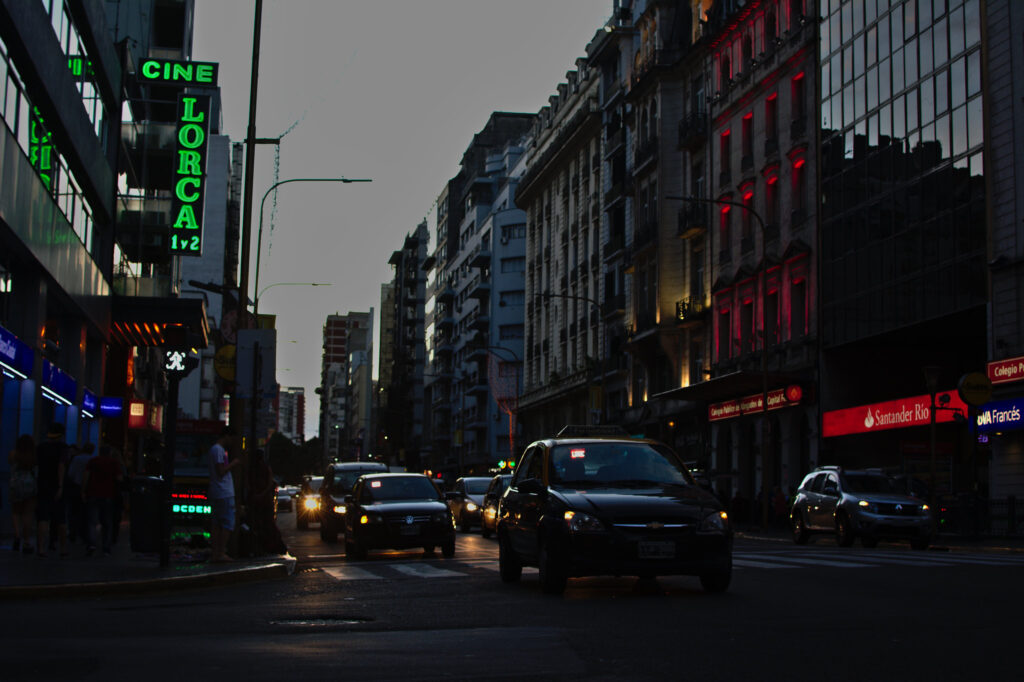
4. Avenida Rivadavia
Avenida Rivadavia cuts across Buenos Aires from east to west, serving as a boundary between the northern and southern city zones. It’s notable for its extensive length, hosting 83 bus lines and 11 subway stations along the Line A, making it a crucial vein for city transportation. Its route showcases diverse urban scenes, from historic to commercial, embodying Buenos Aires’ dynamic urban fabric.
5. Avenida Córdoba
Running parallel to Santa Fe and Corrientes Avenues, Avenida Córdoba is a significant commercial and transit axis through Buenos Aires, linking various neighborhoods.
It’s characterized by its long stretch of fashion outlets, making it a go-to for shopping enthusiasts. The avenue also facilitates a direct route for buses and taxis, contributing to the city’s bustling urban life.
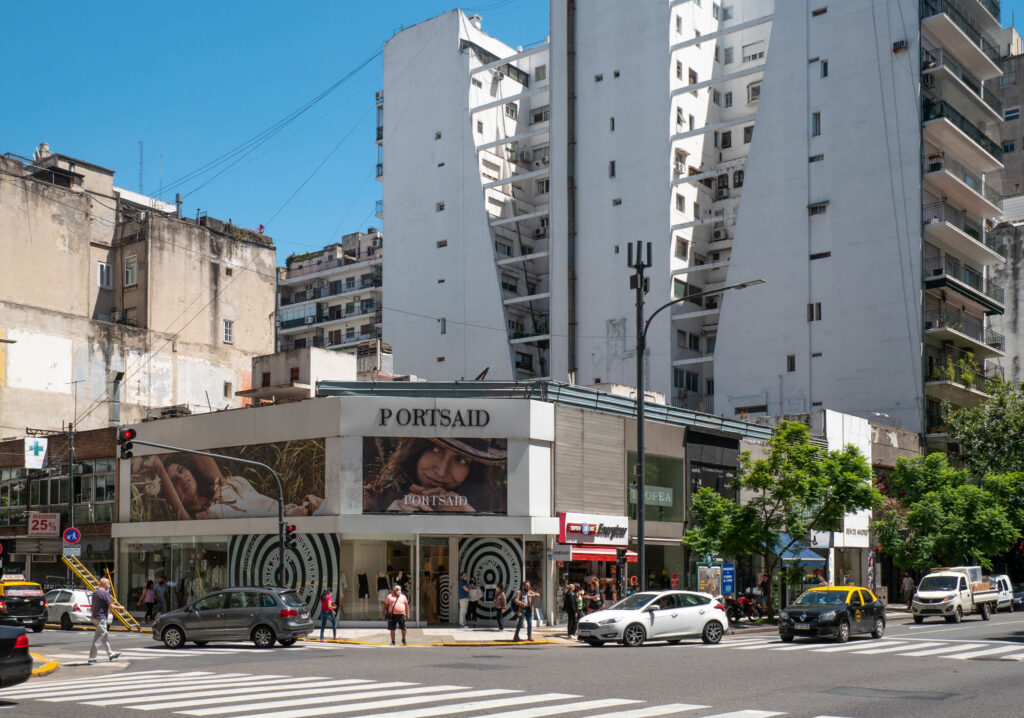
6. Avenida Santa Fe
As a key shopping and architectural artery, Avenida Santa Fe is dubbed the ‘Avenue of Fashion.’ Starting from Plaza San Martín in Retiro and extending northwest to Palermo, it cuts through some of the city’s most prestigious areas.
Its Parisian-style buildings and abundance of retail stores make it a favorite for both locals and tourists seeking a blend of culture and commerce.
7. Avenida Cabildo
A hub for shopping and leisure in the Belgrano neighborhood, Avenida Cabildo stretches from Palermo to the northern outskirts, transforming into Avenida Maipú.
This bustling avenue is celebrated for its diverse shops, dining options, and entertainment venues, making it a lively spot for community interaction and retail therapy.
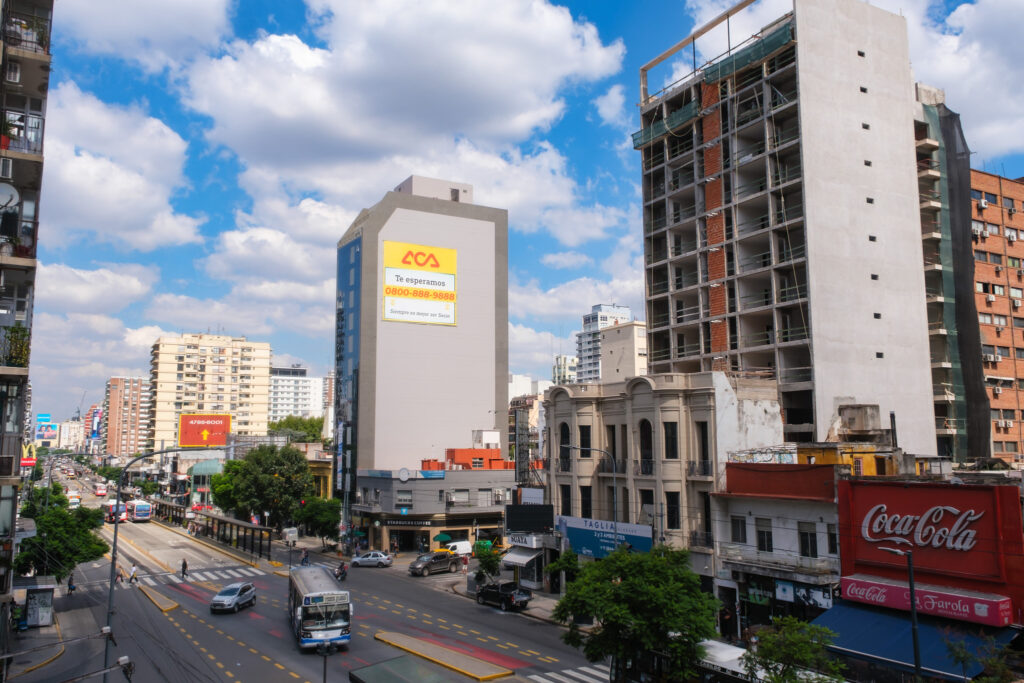
8. Avenida Independencia
Serving as a boundary between several city districts, Avenida Independencia is a historic avenue that facilitates east-west travel through Buenos Aires.
It’s known for its accessibility to key subway stations and for acting as a cultural divide, offering insights into the city’s layered urban identity.
9. Avenida Belgrano
A significant east-west thoroughfare, Avenida Belgrano is adorned with diverse architectural styles, from academic to modernist.
Starting at Ingeniero Huergo near Puerto Madero, it traverses through key city districts, showcasing important cultural and historical sites. This avenue is a testament to Buenos Aires’ architectural diversity and historical depth.
10. Avenida Scalabrini Ortiz
Linking the vibrant neighborhoods of Villa Crespo and Palermo, Avenida Scalabrini Ortiz is a vital conduit for cultural and nocturnal activities.
Close to iconic spots like Plaza Julio Cortazar and Parque Las Heras, it plays a crucial role in the city’s cultural scene, offering a gateway to Buenos Aires’ lively social life.
11. Avenida Gaona
A key east-west artery in Buenos Aires, Avenida Gaona starts from the city’s geographical center, marked by the Cid Campeador monument at the intersection with Avenida Honorio Pueyrredón. Spanning across several neighborhoods, it ends at Avenida Juan B. Justo in Vélez Sársfield.
The avenue is home to historic and cultural landmarks like the Basílica Nuestra Señora de los Buenos Aires and Plaza Irlanda, alongside essential educational institutions and health centers. This vibrant avenue mirrors the city’s blend of tradition and modernity, offering a window into the local way of life.
12. Avenida Leandro N. Alem
Stretching along the lower areas of Buenos Aires, Avenida Leandro N. Alem honors the revolutionary leader Leandro Nicéforo Alem. Starting near the Casa Rosada, it travels north-south, flanked by lush tipas trees, and concludes at the Plaza General San Martín, transitioning into Avenida del Libertador.
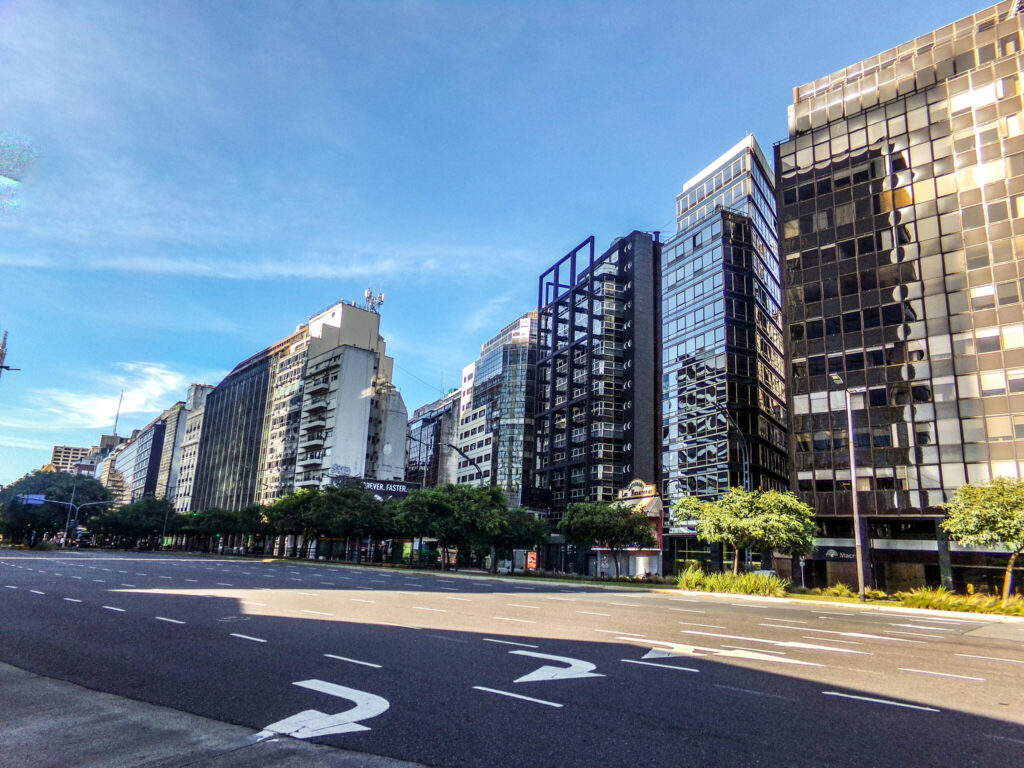
Alem’s journey through the financial heart of the city, past architectural marvels like the Bolsa de Comercio and the Correo Central, reflects Buenos Aires’ rich cultural tapestry and urban evolution.
13. Avenida Callao
Renowned for its stately buildings and historical significance, Avenida Callao has been designated an Area of Historical Protection. From Rivadavia to Santa Fe, it traverses educational landmarks and transitions into a primarily residential area, enriched by commercial vibrancy.
The avenue’s architecture, reminiscent of Parisian elegance, and its diverse zones, including political, educational, and residential areas, showcase the multifaceted character of Buenos Aires.
14. Avenida Figueroa Alcorta
Avenida Figueroa Alcorta celebrates José Figueroa Alcorta, a prominent Argentine statesman. Traversing upscale neighborhoods, it showcases cultural gems like the Museo Nacional de Bellas Artes and the MALBA, alongside modern skyscrapers and historical residences.
The avenue’s layout, embracing green spaces and architectural landmarks, underscores Buenos Aires’ commitment to cultural heritage and urban sophistication.
15. Avenida Pueyrredón
A significant thoroughfare in Buenos Aires, Avenida Pueyrredón honors Juan Martín de Pueyrredón, a key figure in Argentina’s independence. Spanning from Avenida Presidente Figueroa Alcorta to Avenida Rivadavia, it intersects major city landmarks, including the Hospital Alemán and the Recoleta Cemetery.
The avenue’s diverse sections—from bustling commercial zones to serene residential areas—reflect the city’s dynamic urban landscape and rich historical context.
(Featured Image Source: cimarrin/flickr.com)


